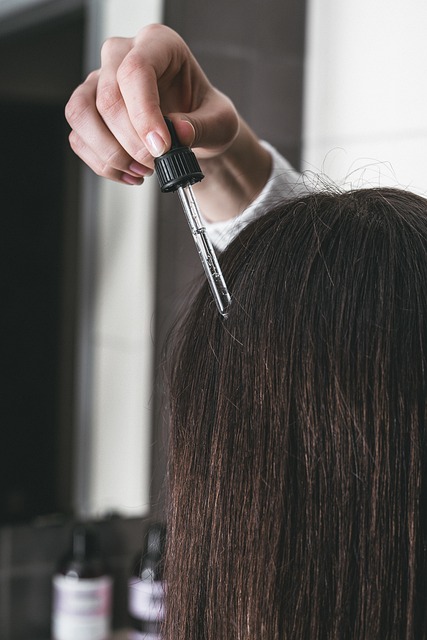Daily haircare habits informed by dermatology
Practical daily haircare habits that reflect current dermatology principles can improve scalp health, manage common concerns like dryness or oiliness, and support overall wellness. This article outlines routine steps, ingredient considerations, and sustainable choices to help you build a balanced, evidence-aware regimen.

Everyday haircare routines benefit from dermatology-informed choices that prioritize scalp health, gentle cleansing, and barrier support. Adopting consistent habits—rather than frequent product changes—can reduce irritation, manage sebum production, and support hair resilience. This article focuses on approachable, evidence-aware steps for cleansing, hydration, sun protection, and ingredient selection, while considering how skincare and cosmetics can interact with hair and scalp. Practical habits emphasize simple, repeatable actions suitable for a wide range of hair types and lifestyles.
This article is for informational purposes only and should not be considered medical advice. Please consult a qualified healthcare professional for personalized guidance and treatment.
How does dermatology guide cleansing and scalp care?
Cleansing choices shape the scalp microbiome and the skin barrier. Dermatologists recommend using sulfate-free or mild surfactant shampoos if you experience dryness or irritation; harsher detergents can strip natural oils and increase transepidermal water loss. Frequency depends on scalp oiliness, activity level, and product use: some people need daily washing, while others do better with two to three times weekly. When shampooing, focus on the scalp to remove sweat and buildup, and let conditioner sit on lengths to avoid adding weight at the roots.
Scalp massage during washing supports circulation and helps distribute product without aggressive rubbing. After cleansing, gently pat hair dry with a soft towel and avoid vigorous toweling that can cause breakage. For persistent flaking, redness, or discomfort, seek dermatological evaluation to distinguish between dandruff, seborrheic dermatitis, psoriasis, or other conditions.
What ingredients support hydration and barrier repair?
Hydration and barrier repair are central to both skin and scalp health. Look for humectants like glycerin and hyaluronic acid in leave-in conditioners or serums, and occlusives such as dimethicone or plant oils in rinses or styling products to reduce moisture loss. Proteins and mild conditioners can help manage porosity, but overuse may cause buildup—rotate deep treatments with lighter daily products.
Dermatology favors simple ingredient lists for sensitive scalps: fewer fragrance additives and lower concentrations of essential oils reduce irritation risk. If you use serums or scalp treatments, introduce new ingredients one at a time and monitor for redness or itching. Patch testing a new topical product on a small area of skin can reveal sensitivity before full use.
How should sunprotection fit into haircare routines?
Sun exposure affects the scalp and hair fiber: UV radiation can degrade keratin and fade color-treated hair, while scalp skin can sunburn, particularly in thinning areas. Dermatology recommends physical barriers first—hats or scarves—for extended sun exposure. For uncovered scalp, use broad-spectrum sunscreen formulated for the scalp or hairline; some sunscreens are designed to be lightweight and non-greasy to avoid residue.
For hair, UV-protectant sprays and leave-in conditioners containing UV filters can help reduce photodamage. Remember that sun protection is a component of overall wellness: protecting the scalp complements skin sun-safety practices and reduces long-term photodamage.
How do skincare and cosmetics interact with hair and scalp?
Makeup, facial skincare, and hair products can migrate and interact at the hairline and scalp. Heavy facial moisturizers and oil-based cosmetics may transfer to the forehead and hairline, increasing product buildup and potentially clogging follicles in susceptible individuals. When using skincare with active ingredients—retinoids or exfoliating acids—be mindful of contact with the scalp, which may increase irritation for some people.
If you use strong topical hair or scalp treatments prescribed by a dermatologist, separate application from facial routines and avoid layering potentially irritating actives together. Cleansing the hairline and forehead gently each evening can remove cosmetic residue and reduce pore-clogging buildup that affects both skin and hair aesthetics.
How can sustainability and ingredient sourcing influence choices?
Sustainability considerations are increasingly relevant to routine product choices. Dermatology-informed sustainability balances efficacy with lower environmental impact: select products with transparent ingredient lists, recyclable packaging, and responsibly sourced components. Concentrated formulas or solid shampoos can reduce water and plastic use, while multi-use products (for hair and body) can simplify routines and waste.
When choosing eco-friendly options, prioritize products that still meet dermatological needs—fragrance-free versions for sensitive scalps, and formulations with proven humectants or conditioners. Look for brands that publish ingredient breakdowns and safety testing information so you can assess both environmental and skin health implications.
How often should styling and maintenance align with dermatological principles?
Styling choices affect hair structure and scalp health. Limit high-heat styling and tight hairstyles that place tension on follicles; these practices reduce breakage and lower the risk of traction-related hair loss. When using heat tools, apply a thermal protectant and work at lower temperatures to preserve hair integrity. Rotate styling methods to avoid repeated stress on the same areas.
Regular trims remove split ends and help hair appear healthier, while professional treatments should be chosen with scalp condition in mind; communicate any scalp sensitivity to stylists. Routine monitoring—observing changes in shedding, scalp sensations, or skin appearance—guides when to consult a dermatologist for tailored recommendations.
A concluding note: daily haircare informed by dermatology combines gentle cleansing, targeted hydration, sensible sun protection, and ingredient awareness with sustainable habits. Small, consistent adjustments—rather than frequent dramatic changes—typically yield more stable scalp and hair outcomes over time.





